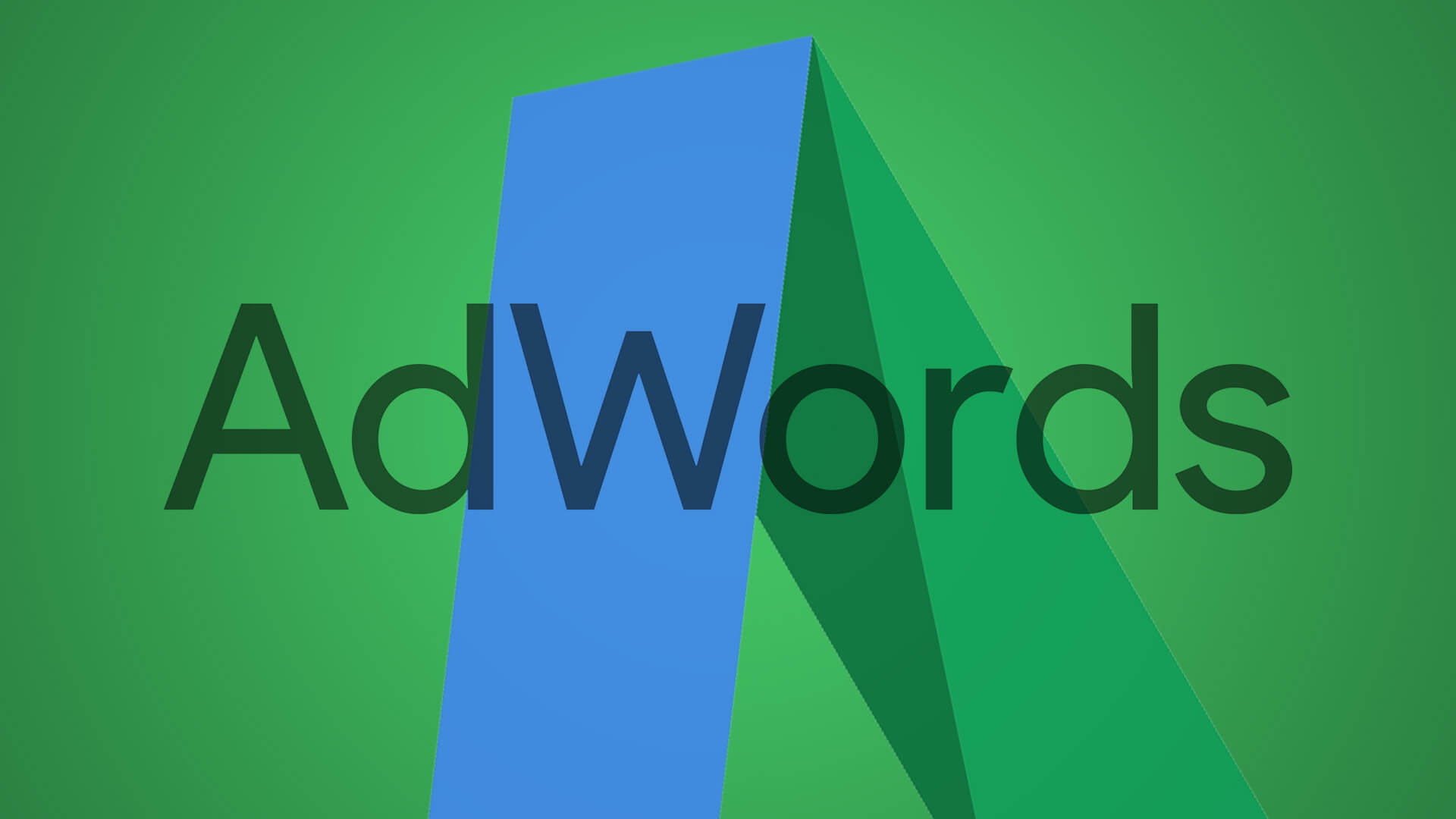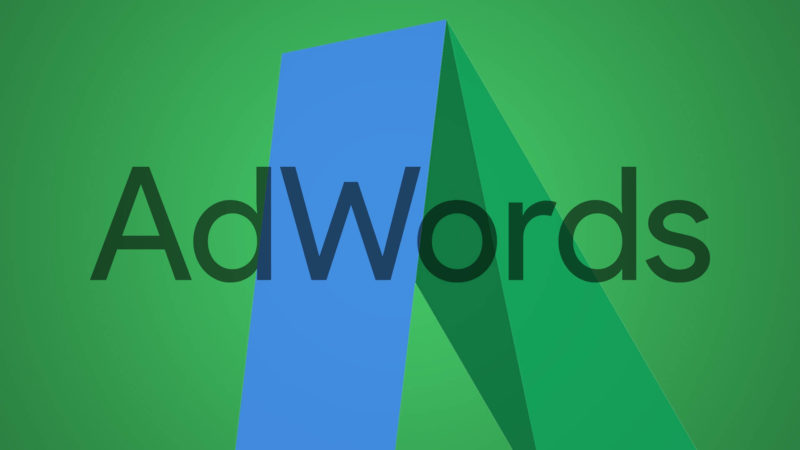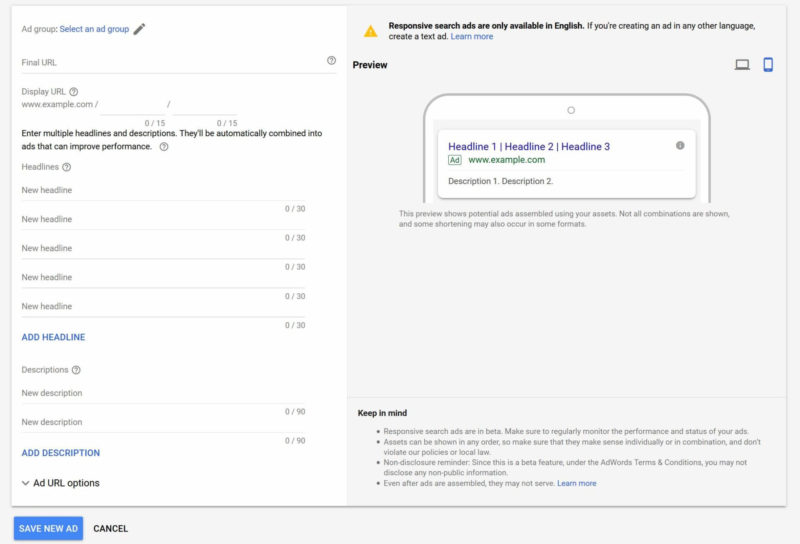We’re finally here. Set up one ad with multiple headlines and a couple of descriptions, and Google will start testing combinations dynamically to serve the combination deemed most likely to achieve the advertiser’s stated goal. Oh, and get more real estate than a standard text ad for giving the new machine learning option a go.
Google’s new responsive search ads are now in beta in AdWords, though not available to all advertisers yet.
They are part of the continuum to let machine learning models do the work of ad creative optimization. Some of the initiatives that have come before it: dynamic search ads, automated ad suggestions (formerly known as Ads Added by Google) and Google’s efforts over the past year to get advertisers to give up manual A/B testing and add at least three ads per ad group. This is the same concept, just more automated. And, of course, there’s the push to automated ad rotation optimization.
The argument for having multiple ad options is that your ad groups will have opportunities to compete in more auctions when there are more options for the keywords to trigger your ads. It also requires relinquishing more control to the machines, which can give those devoted to strictly controlling their ad tests agita. But responsive text ads are just one more indication that the days of manual A/B testing are coming to an end, and fast.
Need an incentive to try them? Google’s giving responsive search ads more character real estate than expanded text ads.
- Show up to three headlines instead of two.
- Show up to two 90-character descriptions instead of one 80-character description.
Advertisers add multiple headlines and descriptions when setting up Google’s new responsive search ads.
Writing ad combinations and ‘pinning’
Advertisers can set up as many as 15 headlines and four descriptions in a responsive search ad. The other fields are the same as expanded text ads.
The extra lines and automated order mean you’ll need to think through all the various combination scenarios. Google suggests writing your first three headlines as if they’ll appear together (in whatever order) in the ad.
Try to make the headlines distinct from each other, spotlighting different features, benefits, offers, calls to action and so on.
The best practice for responsive text ads — writing headlines that are relevant to the keywords in the ad group and including at least one of the keywords in your ad group in the headlines — remains valid.
There is an option to “pin” headlines and descriptions to specific positions. This will be particularly helpful for advertisers in sensitive categories that require disclaimers, for example. Keep in mind that if you pin just one headline or description to a position, that will be the only thing allowed to show in that spot. It’s possible to pin a few headlines or descriptions to a position to provide more flexibility in the dynamic matching.
To see reporting metrics on responsive search ads, create a filter for them in the ad type column then download the report or open it in Report Editor.
While they’re in beta, advertisers will only be able to add responsive search ads to ad groups with existing ads. You can find more details on the AdWords support page.
Contributing authors are invited to create content for Search Engine Land and are chosen for their expertise and contribution to the search community. Our contributors work under the oversight of the editorial staff and contributions are checked for quality and relevance to our readers. The opinions they express are their own.






